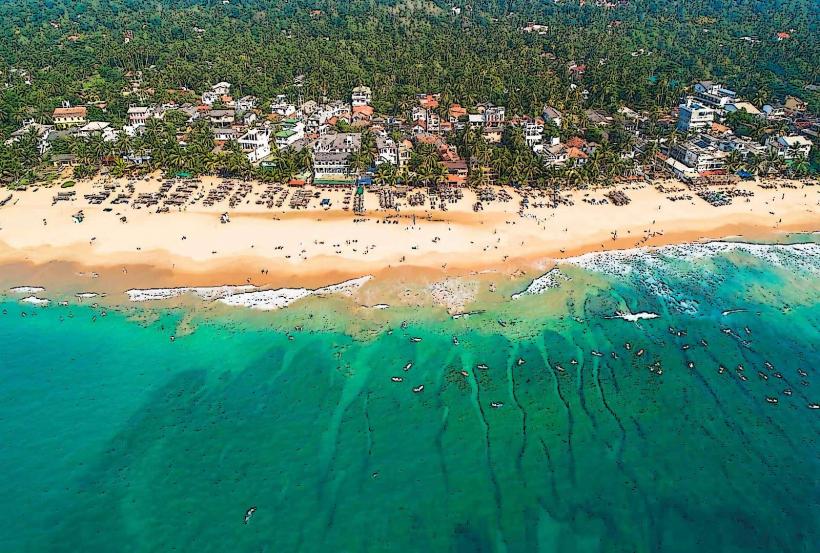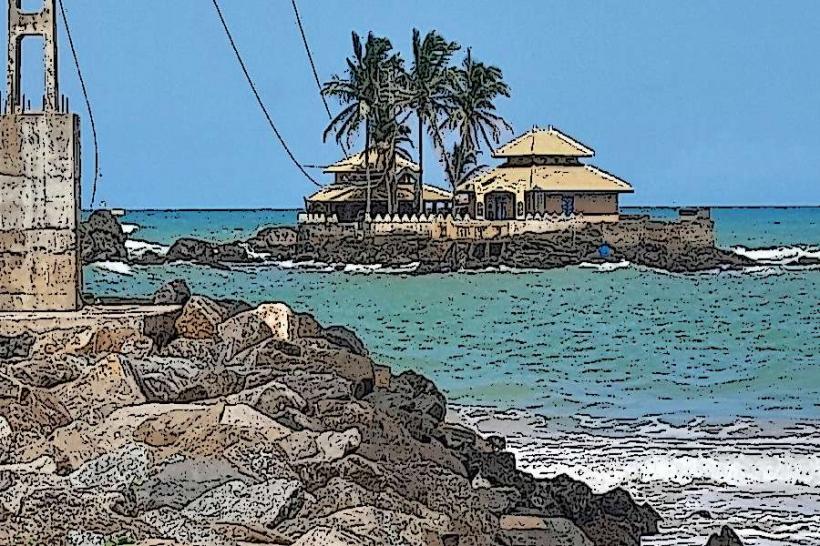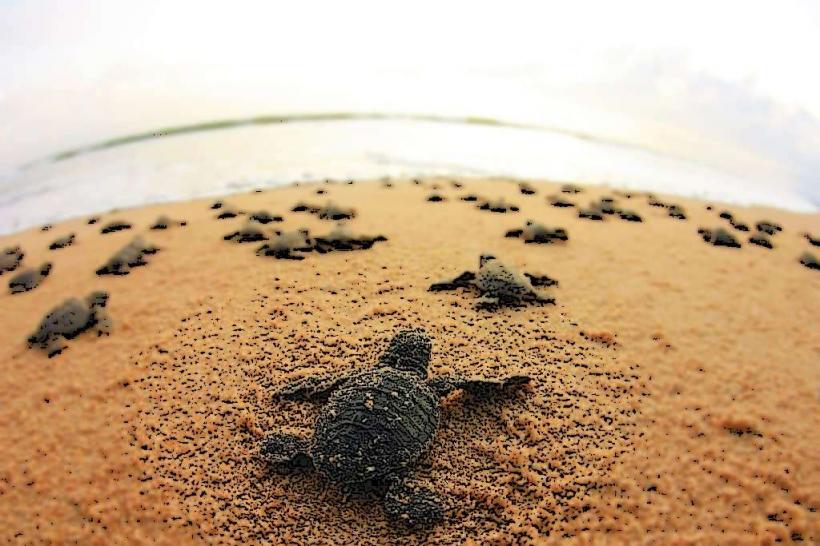Information
Landmark: Hikkaduwa Coral ReefCity: Hikkaduwa
Country: Sri Lanka
Continent: Asia
The Hikkaduwa Coral Reef is one of Sri Lanka's most renowned and ecologically important marine ecosystems. Located off the southwestern coast near Hikkaduwa, the reef is a vibrant underwater world that attracts tourists for its rich biodiversity, coral gardens, and exceptional opportunities for water-based activities like snorkeling and diving.
1. Overview
- Location: Off the coast of Hikkaduwa, Southern Province, Sri Lanka.
- Size: The reef extends over a significant area, with depths ranging from shallow coastal waters to deeper zones.
- Designation: Part of the Hikkaduwa National Park, a marine protected area established in 2002.
- Importance: One of Sri Lanka's top marine protected areas due to its exceptional coral diversity and significant marine life.
2. Marine Life and Biodiversity
The Hikkaduwa Coral Reef is home to a wide array of marine species, some of which are endangered or endemic to the region.
Corals
- Hard Corals: The reef features many species of hard corals, creating a colorful underwater landscape. These corals are crucial for the reef’s structure and provide habitats for marine species.
- Soft Corals: Gorgonian and other soft corals thrive in the deeper parts of the reef.
- Coral Gardens: These gardens are especially prominent in shallow waters and offer a visual spectacle.
Fish Species
- Tropical Fish: The reef is home to a variety of tropical fish such as parrotfish, angelfish, butterflyfish, and groupers.
- Endemic Species: There are several species that are endemic to the region, including unique varieties of snappers and wrasse.
- Pelagic Species: Larger fish such as barracudas and jacks may be seen in deeper waters.
Other Marine Life
- Sea Turtles: The reef is a popular feeding ground for sea turtles, including the green sea turtle and hawksbill turtle.
- Crustaceans: Various species of crabs, lobsters, and shrimps are commonly found.
- Sea Urchins and Starfish: These invertebrates add to the biodiversity of the reef.
3. Activities
The reef is a major draw for tourists, particularly for water sports and marine exploration.
a. Snorkeling
- Ideal Spot for Beginners: The shallow parts of the reef are easily accessible and perfect for beginners or casual snorkelers.
- Visibility: The waters are clear, offering great visibility to explore the coral gardens and marine life.
b. Scuba Diving
- Diving Sites: There are several dive sites along the reef, offering varying levels of depth and complexity.
- Diving Operators: Numerous dive centers in Hikkaduwa offer guided dives, equipment rentals, and training courses for beginners and experienced divers.
- Diving Depths: The reef offers a range of depths from shallow areas (ideal for snorkeling) to deeper sections (best for experienced divers).
c. Glass-Bottom Boat Tours
- For those who prefer to stay dry, glass-bottom boat rides provide an opportunity to observe the reef and its marine inhabitants without getting into the water.
4. Environmental Significance
The Hikkaduwa Coral Reef is crucial for both marine life and the local community.
a. Marine Habitat
- Biodiversity Hotspot: It serves as a sanctuary for a wide range of marine species, including rare and endangered fish and reptiles.
- Breeding Ground: The reef provides essential breeding grounds for various fish species, helping maintain the balance of local marine ecosystems.
b. Coastal Protection
- The coral reef acts as a natural barrier, protecting the coastline from erosion and reducing the impact of strong waves.
c. Economic Value
- Tourism: The reef is a key element of Hikkaduwa's tourism industry, attracting snorkelers, divers, and nature enthusiasts from around the world.
- Fishing: While fishing around the reef is restricted to protect its ecosystem, the nearby waters remain important for the local fishing industry.
5. Conservation Efforts
While the reef remains a valuable and protected area, it faces threats from human activity.
a. Coral Bleaching
- Rising ocean temperatures, often linked to climate change, have led to coral bleaching events, which can damage coral ecosystems.
b. Pollution
- Marine pollution, especially plastic waste and oil spills, poses a significant threat to the reef's health.
c. Overfishing
- Although fishing is controlled, illegal or overfishing can disturb the balance of the reef's ecosystem.
Conservation Measures
- The establishment of Hikkaduwa National Park has helped regulate human activity, with strict enforcement of fishing bans and marine protection laws.
- Coral Restoration Projects: There are ongoing efforts to restore damaged sections of the reef through coral transplantation and other restorative methods.
6. Best Time to Visit
- Peak Season: November to April is the best time to visit Hikkaduwa and the coral reef, as the weather is sunny and calm, with good visibility for snorkeling and diving.
- Off-Season: During the monsoon (May to October), rough seas may limit access to the reef.
7. How to Get There
- From Hikkaduwa: The coral reef is easily accessible by boat from the beach or local piers.
- From Colombo: Approximately a 2.5-hour drive via the Galle Road or Southern Expressway to Hikkaduwa.
8. Tips for Visitors
- Respect the Reef: Avoid touching or stepping on corals, as this can damage them and disturb marine life.
- Marine Life Safety: Do not disturb or harass marine animals, particularly sea turtles and fish.
- Environmental Awareness: Dispose of waste responsibly and avoid polluting the waters.
9. Conclusion
The Hikkaduwa Coral Reef is one of Sri Lanka's most spectacular natural treasures, offering unparalleled opportunities for marine exploration. Its rich biodiversity, coupled with the beauty of the underwater landscapes, makes it a must-visit destination for nature lovers, snorkelers, and divers. Visiting the reef not only offers a chance to witness its beauty firsthand but also underscores the importance of preserving such vital ecosystems for future generations.




